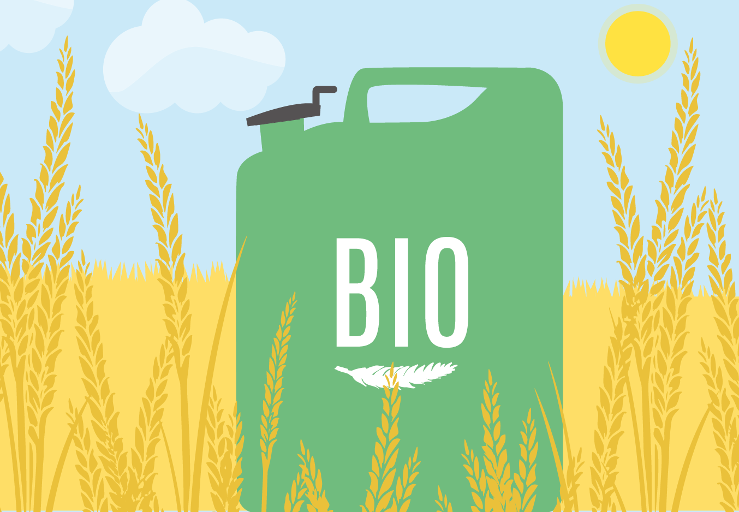
Biofuels
Some biofuels are produced by using microorganisms to anaerobically ferment carbohydrate in the plant material - as is the case with bioethanol and biogas production (each process uses different microorganisms).
Disadvantages of Biofuels- The demand for biofuel crops means greater demand on rainforest land.
- Greater demand than can be produced in time.
- Car modifications required to use fuel.
- Could cause food shortages or raise cost of food.
Bioethanol
When ethanol is made by fermentation, sugar is converted into ethanol and carbon dioxide if conditions are anaerobic. Single-celled fungi, called yeast, contain enzymes that are natural catalysts for making this process happen. In some countries, such as Brazil, the source of sugar is sugar cane - which yeast can directly ferment into ethanol. In other countries, plants such as maize are used. Because maize contains starch rather than sugar, the enzyme amylase must first break down the starch into sugar before the yeast can ferment it into ethanol. The ethanol produced by yeast only reaches a concentration of around 15 per cent before the ethanol becomes toxic to the yeast. In order to make it sufficiently concentrated to be burnt as a fuel, the ethanol must be distilled.
Biodiesel
Biodiesel is produced by reacting vegetable oils with methanol. The main product is a methyl ester of a long chain fatty acid, and this is used as biodiesel. Glycerol is produced as a by-product. Biodiesel can be used as a replacement fuel in most modern diesel engines - unlike raw vegetable oil, which can only be used in converted or old-fashioned diesel engines.